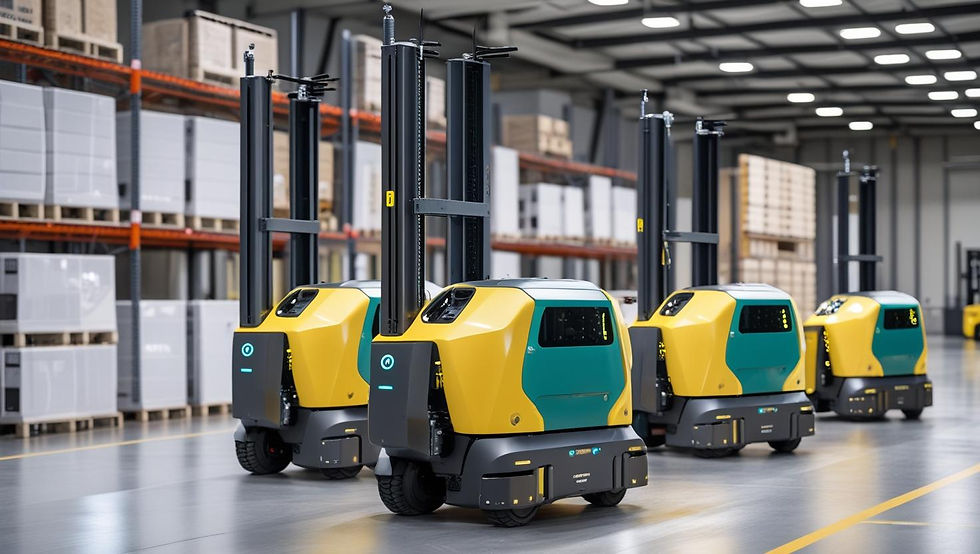The Shift Toward Autonomy: Where Are We Really With Autonomous Forklifts?
- Seeteria Team

- Aug 5
- 2 min read
Autonomous forklifts have moved from novelty to near-normal in some cutting-edge warehouses. But how close are we to true autonomy? Despite the headlines, the industry is still very much in transition.
In this article, we unpack the current state of autonomous material handling, examine where adoption really stands, and explore what’s holding it back.

Autonomous Forklifts: From Prototype to Production
Ten years ago, self-driving forklifts were a futuristic concept. Today, they're deployed in real-world logistics operations around the globe. Companies like Fox Robotics, Balyo, Seegrid, and Linde have developed autonomous or semi-autonomous forklifts for tasks like trailer unloading, horizontal transport, and pallet stacking.
But even with these advancements, full autonomy is rare. Most deployments operate in controlled zones or hybrid environments where human drivers are still very much present.
Real-World Adoption: Growing, But Gradual
While the tech has matured, widespread adoption lags behind the buzz. According to industry estimates, less than 3% of all forklifts in use are autonomous. Adoption is most common in high-volume warehouses, 3PLs, and automotive facilities where ROI is easier to demonstrate.
The reasons? High upfront costs, integration complexity, and the unpredictability of most warehouses. Retrofits are an option, but they still require tight control over workflow.
Challenges Slowing Full Autonomy
Warehouses are not like roads. They change often, involve constant human interaction, and require nuanced decisions. AI still struggles with edge cases like:
Temporary obstacles (e.g., plastic wrap, broken pallets)
Unstructured layouts or floor inconsistencies
Pedestrian unpredictability
Changing lighting conditions
Until those are solved at scale, human oversight will remain necessary.
Emerging Models: Autonomy With a Human Touch
Instead of waiting for perfect autonomy, many companies are embracing semi-autonomous or "human-in-the-loop" models. These systems perform routine tasks like navigating from point A to B or stacking pallets, but alert a human when something uncertain occurs.
It’s not flashy, but it works. And it delivers real value like reducing strain, improving efficiency, and creating safer environments.
Is Autonomy Worth the Hype?
Yes, but only if you understand what autonomy really looks like today. It’s not about replacing operators overnight. It’s about evolving roles, adding intelligence to repetitive work, and reducing risks in high-traffic environments.
Conclusion:
Autonomous forklifts are not science fiction anymore, but they’re also not fully hands-off. The most successful deployments recognize that autonomy is a spectrum and that progress doesn’t mean removing humans, but working smarter alongside them.
As the technology and infrastructure evolve, staying informed is key. If you're in logistics, safety, or operations, this is a shift worth watching.




Comments